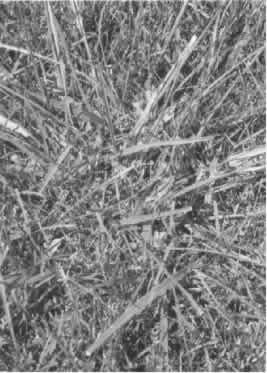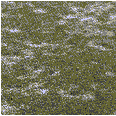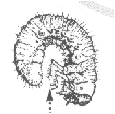
The
ability to take in nutrients efficiently depends on many factors,
including soil composition. Most lawns need these, and most
people don't realize the difference they can make.
SOIL
TEST |
We
will take between 4-8 samples, mix and have tested in
lab for pH, micro-nutrient levels and more. |
|
| LIME
/ SULFER |
GYPSUM |
Soil
pH is very important to all plants. Lawns like it between 6.5
and 7.5. Lime or Sulfer is added to correct or maintain a proper
soil pH. We apply at an amending rate (30-50 pounds per thousand
square feet). Coupled with a core aeration, you will maximize
the impact on your lawn. Lime especially helps lawns that are
shady, have a lot of pine plants, high amounts of leaves or rooting
plant material. With lime, color and health are enhanced by neutralizing
many soil problems older lawns have. Most lawns that have been
around 5 years or more will benefit. |
Gypsum
loosens hard-packed soils, increases nutrient availability from
fertilizer treatments making soil more receptive, and helps plants
get a better chance to expand their roots. It also gives your
lawn vital nutrients like Calcium. If you have clay, this treatment
will really help. We suggest you apply this after core aeration
to enhance the ability of getting it into the soil. We apply at
an amending rate (30-50 pounds per thousand square feet). Softening
the soil will help lawns breath and root, making any lawn more
thick and healthy. |
| |

Clump
of Tall Fescue
|
Tall
Fescue is the taller, wide clumpy grass that is an eyesore in
a finer grassed lawn. It is often mistaken for Crab Grass or Quack
Grass by the homeowner. Tall Fescue is a perennial grass, which
means it comes back every year and will spread out if not controlled.
A product for this problem has recently become available, and
we here at Aaron's are happy to provide the service.
We
will spot treat the problem areas. Follow-up maintenance on your
part will be necessary to continue to provide the optimal conditions
needed for the best control results. A repeat application may
be necessary after 60 days, at which point we can re-evaluate
at your request. Depending on the amount of Tall Fescue killed
out, an aeration and overseeding may be necessary to help thicken
and fill in the areas. |
|
|
| Every
lawn has some type of fungus or insect eating at it every day. Some
lawns can resist this more than others, and some lawns just need
help. Most of the time, fungus and insects are active a month or
more before we see damage. After we see it, we can contain the damage,
but we cannot reverse the damage done to your lawn to identify and
treat it. Stopping fungus and insects before they start is achieved
by putting down preventatives. Even if you don't have a lot of turf
problems, you can give your lawn the edge. If your lawn has any
kind of insect or fungus damage year after year, this program can
stop the damage before it starts. |
|

Fungus
Problem
|
FUNGUS
PREVENTATIVE- Lawns that have problems with circles and
spots caused by fungus year after year can be controlled.
Lawns that have problems with diseases are treated three to
four times every three to five weeks. With proper cultural
practices including aeration, your lawn can improve.
Diseases controlled include: Anthracnose, Dollar Spot,
Large Brown Patch, Pink Snow Mold, Summer Patch, Fusarium
Blight, Necrotic Ring Spot, Striped Smut, and many more.
|
|

Grub
|
INSECT
PREVENTATIVE- Our major concern is that we are seeing
more and more grub problems in the area, and the only really
effective way to control them is a preventative. This treatment
is very affordable. We hope customers allow us to treat these
problems correctly, leaving less lawn damage.
Insects controlled include: Grub Larvae, Japanese Beetle,
Black Turfgrass Ataenius, Chafers, Green June Beetle, Asiatic
Garden Beetle, Crane Fly Larva, Mole Crickets, Billbugs, Chinch
Bugs, Cutworms, Earwigs, Sod Webworms, and more. |
|

We suggest over-seeding or slit seeding a lawn if it
is thin after years of use, after fungus and/or insect
damage has occurred, or if it needs some help getting
started. We only use high quality seed with the right
mixture for shady and sunny areas. This seed is more
resistant to insects, disease, acidic soil, and other
common problems than the grass seed of yesterday. The
best time is in the spring or fall when temperatures
and rain are more favorable for germination.
Over-seeding-This
is usually done after core aeration or raking. It will
thicken and strengthen your existing lawn by giving
it diversity to fill in where your lawn is having problems.
Slit
Seeding-We use a machine that slits the ground
with blades while simultaneously dropping the seed into
the slits. Planting the seed at exactly the right depth
gives a very high rate of germination.
|

Another
Satisfied Customer
|
Would
you like a free estimate?
|
|
|
|



